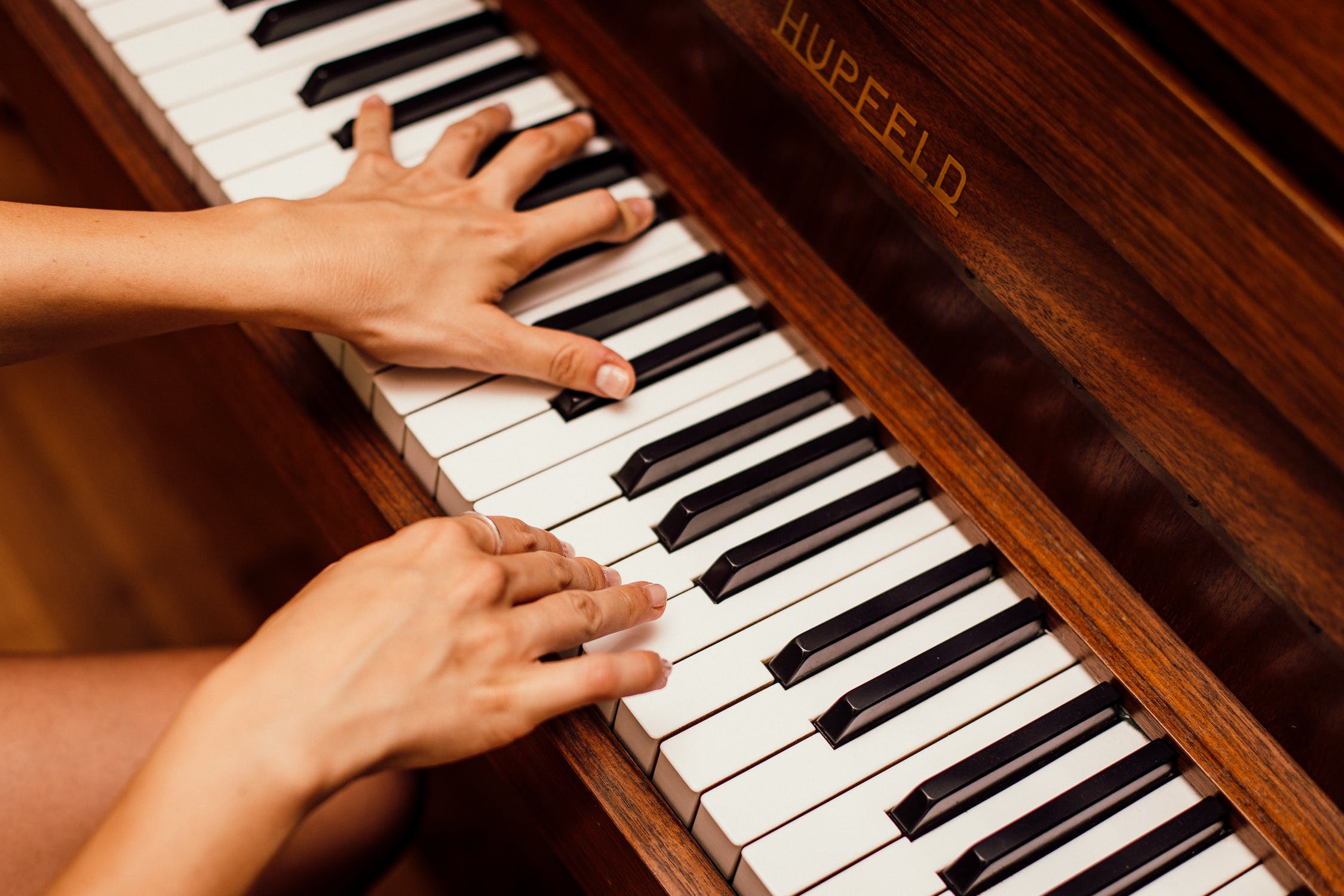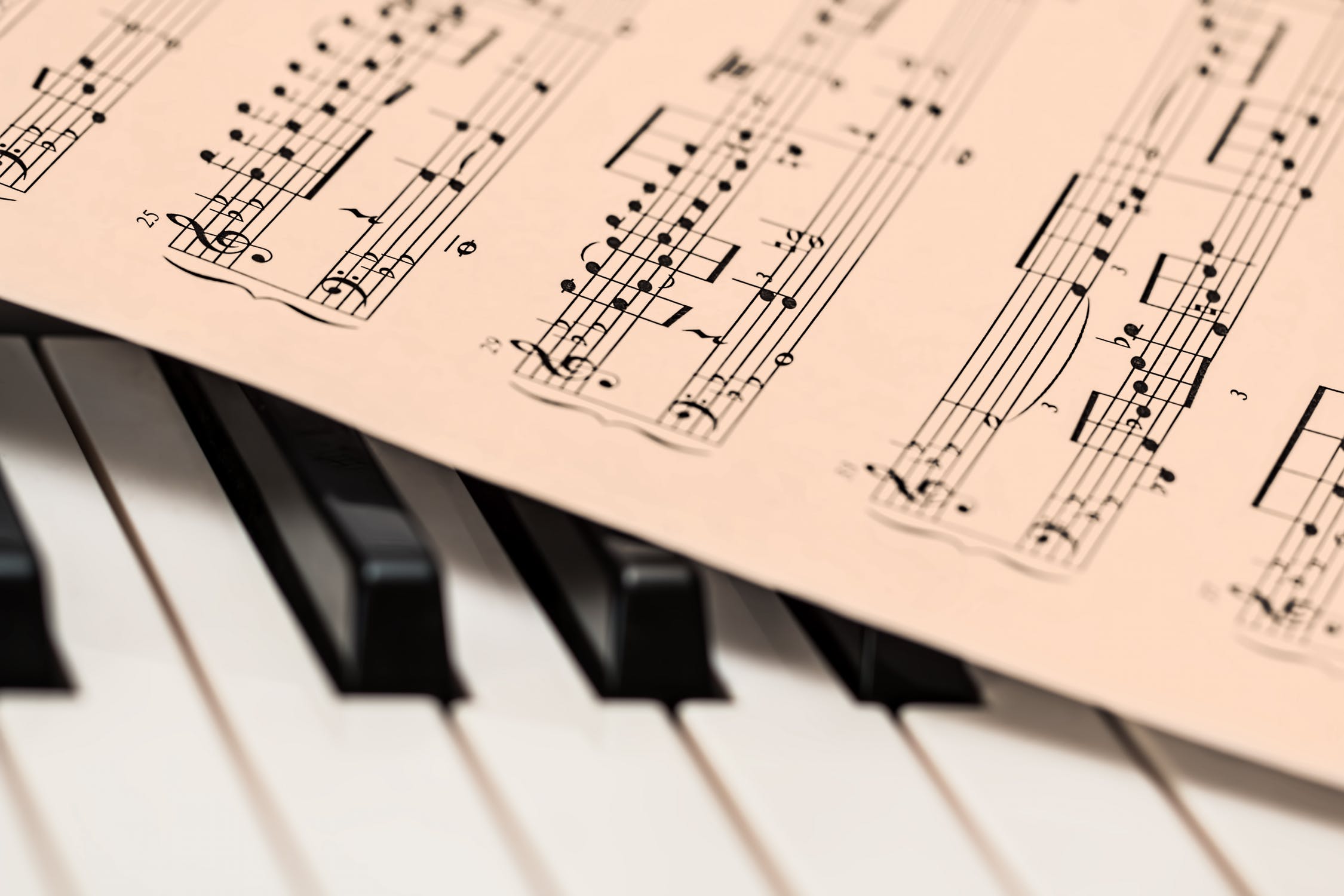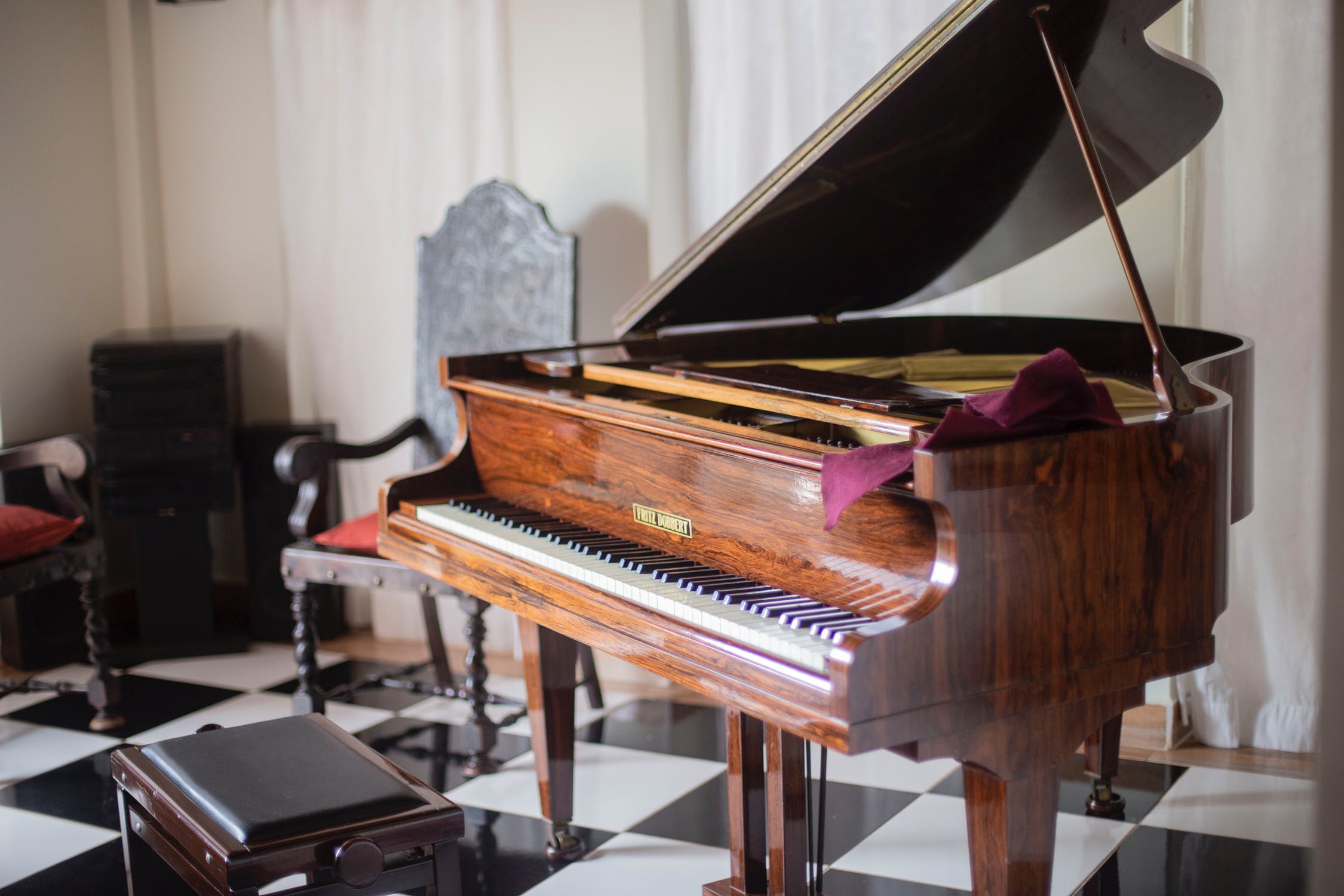The pentatonic scale is one of the most often used scales in the history and since the creation of western music as we know it.
The word pentatonic consists out of two words. Penta-, which is Greek for the word 5 and tonic, which represents the root note of a tonal center in any given key.
The conceptual name indicates that we will be dealing with 5 unique notes in the scale based on a root not established in any given key.
The pentatonic scale has been used absolutely everywhere. From classical music, to jazz, pop, rock and blues. To be honest, it is a quite enjoyable scale, to listen to and to play.
Today we’ll be covering absolutely everything there is to know about the Pentatonic scale and what you can do to really master it on guitar and piano, the main 2 instruments in the western music society.
What Is The Pentatonic Scale?
When we talk about this scale, we know so far that there are 5 notes in it. Truly, what that means is that you can have any scale, which can have any type of combination between intervals and what not, and as long as it has 5 different notes and not more or less, it would be considered a pentatonic scale.
Now, that is obviously not how we have been taught the pentatonic scale.
What we have learned, is that in our western society, you truly have 2 main pentatonic scales, and that is the major pentatonic scale and the minor pentatonic scale.. In a way, they are actually exactly the same, but not really, and that will be our first step to talk about.
The Difference Between Major And Minor Pentatonic Scale.
The main difference is one of a mathematical situation.
When we look at the major pentatonic scale, we can describe its characteristics as followed: 1 2 3 5 6.
These numbers refer to the notes relative to the root note or tonic (in this case the number one).
If we were to transpose this to let’s say the C major pentatonic scale, then the notes would translate to being C (1), D (2), E (3), G (5), A (6).
Makes sense so far, right?
Well, let’s have a look for a second at the minor pentatonic scale.
The minor scale actually has a few different characteristics, when it comes to the path part. It shows as followed: 1 b3 4 5 b7.
If we were to translate this to let’s say the C minor pentatonic scale, the notes would come out as followed: C (1), Eb (b3), F (4), G (5), Bb (b7).
Which looks vastly different from its major version.
However, if you have any theoretical background, then you know that every major and minor scale has a relative sibling scale and a parallel scale.
Therelative minor scale of C major, is A minor. While the parallel minor scale of C major, is C minor.
The concept pertaining to this topic, focusses on the use of the relative minor concept.
Let’s say for example we are looking at the C major scale, which consists out of the notes C D E F G A B. Our next step is to take the pentatonic version of that, which consists out of C D E G A.
Our next step is to find the relative minor of C major, which is A minor.
So, let’s have a look t the A minor scale. The notes you’ll find there are A B C D E F G. If we take its pentatonic version, we get A C D E G. Looks familiar yet?
If you have a closer look at all of the notes that are in the C Major pentatonic and the A Minor pentatonic scale, you will notice that they are exactly the same notes.
However, just as the relative concept indicates, while the notes may be the same, both scales give out a completely different feel and vibe.
How To Treat Both Major And Minor Version?
Well, what I personally do is, when I see a major chord I play a minor pentatonic scale over it. Why? Because it just sounds much much better to me than the major pentatonic version by a long shot, in most circumstances.
Whenever I play solo piano, I actually play both, but it’s sort of like a split second realization of, oh I’m playing over a C major chord, yea C major pentatonic and A minor pentatonic.
And that’s the level that you want to get to.
How To Practice The Pentatonic Scale.
Let’s do this actually, considering I’m a multi-instrumentalist, I’m going to do a general break down of how you should practice scales on a couple of different instruments.
How To Practice The Scale On the Piano
Let’s start with the most important instrument, and by that I mean that everyone knows a little bit of piano to help with harmonically choices in composition and understanding, so I think it may be a good situation to start looking at the piano first
STEP 1: WRITE DOWN ALL THE SCALES
Write down all of the major versions and all of the minor versions. Next, start with the minor versions.
There are two finger positions I recommend. The first recommendation is where you use all 5 fingers to form a pentatonic chord at the same time. A pentatonic chord is a chord made up out of all of the notes of the pentatonic scale. A pentatonic chord is essentially a pentatonic scale where all notes are played at the same time. Try it out! It sounds great.
When you’ve done that, you instantaneously know how to play the chord version, and have the ability to play the scale if you want to because you visually have gotten used to what the scale looks like thanks to the chord version.
My recommendation is that you always practice the pentachord with both hands. While I recommend you practice the pentatonic scale with both hands as well, you most definitely want to start out with your right hand first, however that would require a different finger position that we will get into now.
The second recommendation, is like I mentioned earlier, that you start practicing the pentatonic scale with the right hand, using only your first, second and third finger. Essentially only using your thumb, index and middle.
Most, if not all pentatonic scale scan be bold down to being played in a solo setting with the right hand using those three fingers.
Why would you want to do that? Because there is an effective way to play the scale like that, which will let you flow throughout the keyboard very very nicely, which is exactly what you’ll need when actually performing a solo using the pentatonic scale.
For example, the C minor pentatonic scale would use the finger position 1 3 1 2 3 (1) for the notes C Eb F G Bb (C). When you practice it like that, it flows very naturally and you’ll be able to flow through multiple octaves up and down.
This concept is transferable to other pentatonic scales in other keys, however you may have to switch up your finger position.
For example, the F minor scale uses the finger position 1 2 3 1 3 which is slightly different from C minor’s 1 3 1 2 3.
Note that this finger position is only for the right hand. The left hand will use a different finger position.
In case you didn’t know, the number 1 translates to the thumb (in both hands), the number 2 is the index, number 3 is the middle finger, number 4 is the ring finger, while number 5 is the pinky. And this counts for both hands.
Do this, both recommendations, in both hands in all 12 keys. Do it fast, at random and at high tempos, and you’ve suddenly become a god at minor 7th 11th chords, along with mastering the major and minor pentatonic chords in all keys.
How To Practice The Pentatonic Scale Guitar.
More info on how to play the scale on guitar will be coming soon!
How To Practice The Scale On the Saxophone
More info on how to play the scale on saxophone will be coming soon!
What Chords Can You Play The Pentatonic Scale Over?
This is truly a great great question, because a lot of people seem to get extremely overwhelmed by this, and truly, the answer is actually quite simple and straight forward.
You can play the pentatonic scale over almost every single chord.
Don’t believe me? Here, I’ll show you!
C major Chord: C E G -> C major pentatonic: C D E G A
C minor Chord: C Eb G -> C minor pentatonic: C Eb F G Bb
C major 7 Chord: C E G B -> C major pentatonic: C D E G A
C minor 7 Chord: C Eb G Bb -> C minor pentatonic: C Eb F G Bb
C dominant 7 Chord: C E G Bb -> C major scale C D E G A or C minor Scale: C Eb (#9) F G Bb
And then there are some diminished, augmented and half diminished chords where this wouldn’t work over, but the majority of the chords available will let you play these scales over it.
You can also play multiple scales over the same chord to get a different effect.
For example: Over the C major chord, we can play the A minor pentatonic scale, the D minor pentatonic scale or the E minor pentatonic scale. All scales contain notes of the key of C major, so we’re good!
However, all scales touch upon different notes and extensions, causing different colors to take place.
What About Rhythm In Pentatonic Scale Use?
Honestly, you can obviously play any rhythm as long as it’s within the time signature of the song and resolves to something that makes sense.
However I love to use a consistent rhythm that feels scale and bebop like.
I guess you could call it eight note like.
I recommend coming up with patterns in different intervals and much much more ideas that you can come up with. Use it all!
Final Thoughts
Before you go go, it’s good to realize that while I only recommended two major pentatonic scales, the major and minor ones, there are many many more, and all of which I will add here over time.
It is good to learn the pentatonic scale guitar and on piano.
However, it’s more important in music, especially virtuoso music whether it’s improvisational, technical, classical or jazz, that you have a solid foundation to start with, and these are the scales I recommend when it comes to the pentatonic world.If you have any questions in regard to this scale, please feel free to share them in the comment section down below.
We would also really really appreciate it if you could use the rating system down below to give some feedback on what you’ve thought of our explanation.
We want to thank you for visiting our website, and we hope to see you again soon!



